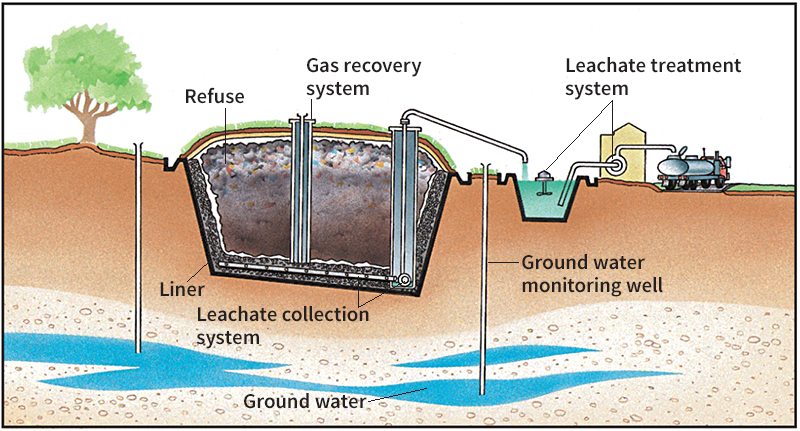Landfill is a place where rubbish and other waste is deposited. Many countries or communities have strict laws and ordinances that regulate landfill operations to protect the environment and people’s health.
Sanitary landfills protect the environment by sealing off the waste. In many areas, a portion of the municipal solid waste is buried in sanitary landfills. Municipal solid waste includes waste from homes, offices, restaurants, and stores. After trash haulers drop off the waste at a landfill, bulldozers, tractors, or other heavy equipment pack the material firmly. Landfill operators cover the waste each day with earth or specially manufactured materials. They then compact it again. The covering helps limit blowing papers, odors, fires, and the runoff of polluted water. It also prevents animal pests from getting into the trash. In tightly packed and covered landfills, little water and oxygen can reach the waste. Without water and oxygen, many materials decompose (break down) slowly.

As the waste in a landfill decomposes, it releases gases into the atmosphere. Other compounds dissolve into the water in the landfill. Landfill operators must monitor and control the release of gases and water to prevent pollution. Modern sanitary landfills have liners of plastic or clay to hold in contaminated water. A drainage system collects rain water that drains into the landfill. The system pumps out the water and transfers it to a treatment plant for removal of contaminants.
When a sanitary landfill site fills up, the operator may cover it with a plastic membrane. The operator then spreads it with a thick layer of dirt. The landfill operator plants grasses or vinelike plants to help prevent soil erosion. Trees and bushes are not planted. Their roots could penetrate the underlying trash and release contaminants. Many communities build recreational facilities, such as golf courses, on closed landfills.
In some regions, unsanitary landfills (open dumps) still operate. Most such landfills have no lining to retain contaminants. The dump operators do not treat wastes or cover them. Open dumps can emit dangerous pollutants. In most cases, no one monitors the gas emissions or the movement of contaminants into the soil and the water.
People produce more solid waste each year. Locations for new landfills have become increasingly difficult to find. Before a landfill is created, many national or regional governments require an environmental impact study that evaluates the landfill’s effects on the environment. Construction of a new sanitary landfill includes installing equipment to collect gases. It also includes drilling wells to monitor ground water (water stored beneath the surface) and digging drainage ditches and collection ponds to handle water runoff. It may also require the building of access roads.
See also Soil pollution ; Waste disposal (Land disposal) .
